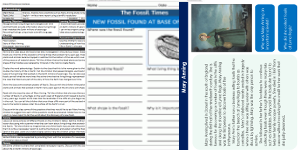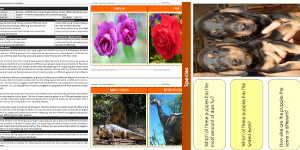Evolution and Inheritance

This science scheme of work for Key Stage Two gets the children to explore how living things adapt and evolve over time as a result of competition for natural resources and transfer inherited traits to their offspring. The class can illustrate the work of different scientists who developed theories about evolution and inheritance.

Explore how living things adapt and evolve over time as a result of competition for natural resources and transfer inherited traits to their offspring

Lesson One : Fossils
Explore and record information about some of the different animals and plants that lived millions of years ago by examining a range of special fossils

Lesson Two : Paleontology
Explore and record how scientists such as Mary Anning observed, studied and presented information about a range of different living things from the past

Lesson Three : Extinction
Investigate and record information about some of the changes to living things that have occurred over time and record reasons as to why some animals became extinct

Lesson Four : Genes
Identify and record how living things can produce similar offspring that are not normally identical to each other during the reproduction processes

Lesson Five : Offspring
Conduct research and present findings to illustrate and record how offspring can be similar to their parents as part of the reproduction process

Lesson Six : Human Evolution
Identify and explain some of the special ways that human beings have developed and evolved over millions of years in time
-

English SPAG Assessment
Assess abilities in composing sentences for fiction and non-fiction using the correct spellings, punctuation marks and grammar vocabulary phrases
-

Maths Arithmetic Assessment
Assess abilities in solving arithmetic number problems for addition, subtraction, multiplication and division when working with informal and formal written calculations
-

Environment
Identify and describe some of the special landscapes and locations that can be found in the world and reflect on how they can be protected and preserved for the future
-

Silent Letter Words
Explore and illustrate the meanings and spellings of some different words with silent letters when using them in a range of topics and scenarios
